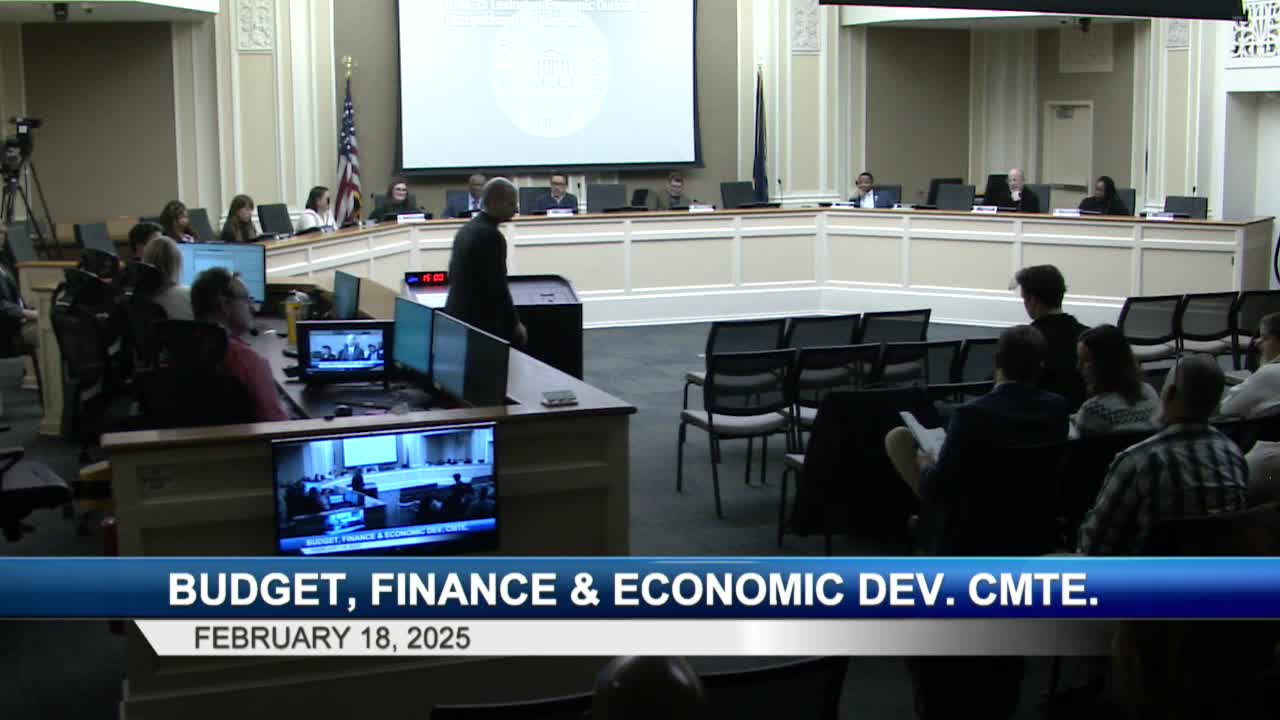Parks director previews how voter‑approved parks fund will guide capital repairs and new projects
February 18, 2025 | Lexington City, Fayette County, Kentucky
This article was created by AI summarizing key points discussed. AI makes mistakes, so for full details and context, please refer to the video of the full meeting. Please report any errors so we can fix them. Report an error »

The committee received an update on parks master planning and the proposed framework for spending the voter‑approved public parks fund. Parks Director Monica Conrad and Michelle Kaceniak, superintendent of planning and design, presented the department’s community‑engagement work, system needs analysis and initial proposals for how the parks fund will be used.
Director Conrad opened by noting the parks funding ballot referendum passed in November with 61% voter support and said the department is developing policies and a project‑selection framework to guide allocations. “We are early in the process, and we're looking forward to hearing your feedback,” Conrad said.
Michelle Kaceniak reviewed the 2018 Parks Master Plan’s public‑engagement process and analytical tools: the master plan engaged nearly 1,000 residents in person and about 2,000 respondents online or by mail, held workshops and 21 focus groups, and produced an action plan with roughly 198 assigned tasks. The plan used a layered social‑needs analysis and service‑area mapping; staff reported that about 59% of residents live within a 10‑minute walk of a park and about 70% live within a five‑minute walk or drive of a community or regional park. The master plan also contains individualized, prioritized recommendations for more than 100 parks.
Conrad described recent capital activity and operations: for fiscal 2024 parks expenses were about $27 million, of which roughly $17 million (65%) was personnel and about $9.5 million was operating. The department reported average capital spending of about $77 million per year during FY21–FY25, driven in part by ARPA and other one‑time investments; since ARPA the department completed 67 projects in 44 parks at a cost of $31 million, staff said. Conrad told the committee the department has about $123 million in outstanding capital improvements — a mix of deferred maintenance and capital replacement needs — and that the parks fund will prioritize protecting existing assets, life‑safety and neighborhood‑level infrastructure while balancing community access across the city.
Committee members asked how new capital additions change ongoing operating costs and how acquisition of new parkland will be funded. Conrad said operational impacts will be evaluated and that the existing park acquisition fund would continue to be used for land purchases; staff described efforts to prioritize capital investments to reduce future maintenance burdens. Council members also asked about the difference between the master plan and the department’s strategic plan; Conrad said the master plan addresses capital and system planning while the strategic plan updates mission, goals and the historically assigned action items.
Staff told the committee they will return in March with a proposed parks‑fund policy and timeline. The mayor’s proposed FY26 budget is expected to include FY26 parks‑fund projects in April, with final budget adoption in June.
Councilmember Baxter closed the parks discussion and said he was available to meet with colleagues about desired policy details prior to the March presentation.
Director Conrad opened by noting the parks funding ballot referendum passed in November with 61% voter support and said the department is developing policies and a project‑selection framework to guide allocations. “We are early in the process, and we're looking forward to hearing your feedback,” Conrad said.
Michelle Kaceniak reviewed the 2018 Parks Master Plan’s public‑engagement process and analytical tools: the master plan engaged nearly 1,000 residents in person and about 2,000 respondents online or by mail, held workshops and 21 focus groups, and produced an action plan with roughly 198 assigned tasks. The plan used a layered social‑needs analysis and service‑area mapping; staff reported that about 59% of residents live within a 10‑minute walk of a park and about 70% live within a five‑minute walk or drive of a community or regional park. The master plan also contains individualized, prioritized recommendations for more than 100 parks.
Conrad described recent capital activity and operations: for fiscal 2024 parks expenses were about $27 million, of which roughly $17 million (65%) was personnel and about $9.5 million was operating. The department reported average capital spending of about $77 million per year during FY21–FY25, driven in part by ARPA and other one‑time investments; since ARPA the department completed 67 projects in 44 parks at a cost of $31 million, staff said. Conrad told the committee the department has about $123 million in outstanding capital improvements — a mix of deferred maintenance and capital replacement needs — and that the parks fund will prioritize protecting existing assets, life‑safety and neighborhood‑level infrastructure while balancing community access across the city.
Committee members asked how new capital additions change ongoing operating costs and how acquisition of new parkland will be funded. Conrad said operational impacts will be evaluated and that the existing park acquisition fund would continue to be used for land purchases; staff described efforts to prioritize capital investments to reduce future maintenance burdens. Council members also asked about the difference between the master plan and the department’s strategic plan; Conrad said the master plan addresses capital and system planning while the strategic plan updates mission, goals and the historically assigned action items.
Staff told the committee they will return in March with a proposed parks‑fund policy and timeline. The mayor’s proposed FY26 budget is expected to include FY26 parks‑fund projects in April, with final budget adoption in June.
Councilmember Baxter closed the parks discussion and said he was available to meet with colleagues about desired policy details prior to the March presentation.
View full meeting
This article is based on a recent meeting—watch the full video and explore the complete transcript for deeper insights into the discussion.
View full meeting
